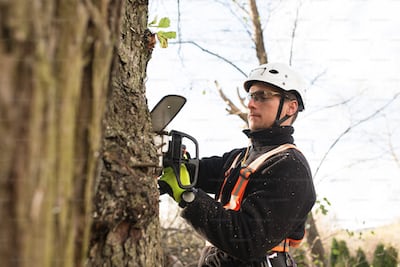Typically the Art and Science involving Tree Cutting: Techniques, Protection, and Environmental Responsibility
Arrival: Navigating the World of Tree Lowering
Tree cutting, often viewed as both an art and a scientific research, is a practice deeply started in human history. Whether with regard to clearing land, ensuring security, or promoting tree well being, understanding the techniques, safety measures, as well as environmental considerations involved in woods cutting is essential. In this detailed guide, we will explore typically the art and science connected with tree cutting.
Tree Chopping: An Intricate Craft
Woods cutting is more than just cutting up down trees. It involves a mix of skills, knowledge, and a responsibility to safety and the environmental preservation. Here, we'll learn about the various aspects of tree lowering:
Techniques of Tree Reducing
Precision Planning
Before just about any tree falls, careful arranging is essential. Arborists evaluate the tree's health, its proximity in order to structures, and the direction associated with its fall to ensure a secure and controlled removal.
Chainsaw Mastery
A chainsaw could be the primary tool for forest cutting. Skilled operators are generally trained to handle various types of chainsaws and employ them effectively various cutting tasks.
Limbing and also Bucking
Limbing is the technique of removing branches from a felled tree, while bucking requires cutting the trunk straight into manageable sections. Both responsibilities require precision to avoid injuries.
Safety Measures
Protective Gear
Forest cutters wear specialized defensive gear, including helmets, eyesight and ear protection, chainsaw-resistant clothing, and sturdy footwear, to safeguard themselves from probable hazards.
Rigging and Ascending
In cases where tree cutting entails climbing, arborists use rules, harnesses, and rigging ways to ensure their safety when working at height.
Interaction
Effective communication among the scanning specialists is vital during tree chopping operations. Hand signals, 2-way radios, and clear oral communication help coordinate measures and prevent accidents.
Environmental Duty
Tree Preservation
Arborists try to preserve healthy trees anytime you can. Tree cutting should be considered when a tree postures a safety risk, is compromised beyond recovery, or any time land development requires the idea.
Sustainable Practices
Responsible shrub cutting involves replanting trees and shrubs to offset the removal's environmental impact. It's vital to maintain the ecological balance on the area.
Proper Disposal
Soon after tree cutting, proper convenience of debris and taking of wood are essential to reduce waste and promote eco-friendliness.
FAQs: Common Questions With regards to Tree Cutting
Is sapling cutting harmful to the environment?
Shrub cutting, when done reliably, can minimize its enviromentally friendly impact. Replanting, recycling solid wood, and preserving healthy woods are key aspects of sensible tree cutting.
Can I trim down a tree on my property or home without a professional?
While one could cut down a small tree with the obligation tools and knowledge, much larger or more complex tree reducing tasks should be left to be able to trained arborists to ensure basic safety and prevent property damage.
How one can tell if a tree should be cut down?
Signs that a woods may need removal include disorder, severe damage, leaning treacherously, or posing a chance to structures or men and women. Consulting an arborist is actually advisable for a professional review.
Is tree cutting often necessary, or are there alternate options?
Tree cutting should just be considered when necessary for protection or land development. Arborists explore alternatives such as trimming, cabling, or bracing keep trees whenever possible.
What happens to often the wood after a tree will be cut down?
After tree slicing, wood can be recycled regarding various purposes, including materials, firewood, or wood poker chips for landscaping.
Can I herb a new tree after lowering one down?
Yes, seeding a new tree is an excellent approach to offset the environmental impact regarding tree cutting. Choose ancient species and care for the actual tree to ensure its balanced growth.
Conclusion: Balancing Expertise, Safety, and Sustainability
Sapling cutting is a multifaceted process that requires a delicate balance involving skills, safety measures, and environment responsibility. When done accurately, it ensures the safety of folks and property while resulting in ecological sustainability.
As you take a look at the world of tree cutting, may well you gain an appreciation to the artistry and science right behind this essential practice. No matter if you're a tree cutter machine, a property owner, or simply wondering, the insights shared below empower you to approach forest cutting with skill, safe practices, and environmental consciousness.
Let's take a check out more details about upon Tree Thyme Purley




Comments
Post a Comment